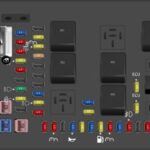For car owners keen on maintaining their vehicles, understanding what’s happening under the hood is becoming increasingly accessible. OBD2 scanners have emerged as valuable tools for DIY diagnostics, offering a peek into your car’s health without immediately resorting to a professional mechanic. With budget-friendly options like those potentially found at retailers such as Aldi, many are wondering if these devices are sufficient for their needs. Let’s delve into the world of OBD2 scanners and explore what you need to know.
OBD2 Standards and Generic Scanners: What You Need to Know
Modern vehicles are equipped with an On-Board Diagnostics system, or OBD, and the current standard is OBD2. This system monitors various aspects of your car’s performance and can detect issues, signaling them through the check engine light and storing diagnostic trouble codes (DTCs). These codes are designed to be standardized, meaning a generic OBD2 scanner should be able to read them, regardless of the car manufacturer.
However, it’s crucial to understand the distinction between standard codes and manufacturer-specific codes. OBD2 codes typically start with a letter followed by four numbers. The first number after the letter indicates if it’s a standard code (like P0XXX) or a manufacturer-specific one (like P1XXX). While generic OBD2 scanners, including potentially an Aldi Obd2 Scanner, are proficient at reading standard P0 codes related to common issues like engine, transmission, and emissions problems, they may fall short when it comes to manufacturer-specific P1 codes. These P1 codes often relate to systems or features unique to a particular car brand and may require more specialized diagnostic tools to decipher.
When a Basic OBD2 Scanner is Enough (and When It’s Not)
For many common car problems indicated by standard P0 codes, a basic OBD2 scanner, like a budget-friendly option, can be incredibly helpful. These scanners allow you to read the fault codes, understand the general area of the problem, and often clear the codes after performing a repair. This can be particularly useful for issues like a loose gas cap triggering an emissions code or a faulty sensor that is relatively straightforward to replace. In these scenarios, an Aldi OBD2 scanner could be a cost-effective first step in diagnosing and resolving minor car troubles.
However, if your vehicle is displaying a manufacturer-specific P1 code, or if a generic scanner isn’t providing enough detail to pinpoint a complex issue, you might need more advanced diagnostic equipment. Furthermore, older vehicles, especially those predating the full standardization of OBD2 around 2006, might present connectivity challenges for basic scanners. As highlighted in discussions among car enthusiasts, some older models might require specific adapters and software to even interface with an OBD2 reader.
Beyond the Basics: Exploring Advanced OBD2 Features
The world of OBD2 diagnostics extends beyond simply reading basic fault codes. More advanced scanners and software offer features like reading live data streams from various sensors, performing actuation tests on components, and even accessing deeper, manufacturer-specific diagnostic functions. Some enthusiasts even explore the possibility of adding custom Parameter IDs (PIDs) to monitor data points not natively included in a vehicle’s OBD2 system, like oil pressure, although this often requires significant technical expertise and potentially adding physical sensors to the car. For brand-specific diagnostics, tools like Multiecuscan for Fiat vehicles are mentioned as examples of software that goes beyond generic OBD2 capabilities.
Conclusion
An Aldi OBD2 scanner or similar entry-level device can be a valuable asset for car owners for basic diagnostics and understanding common fault codes. They offer an accessible and affordable way to engage with your car’s health and potentially resolve minor issues yourself. However, it’s important to recognize the limitations of generic scanners, particularly when dealing with manufacturer-specific codes or more complex automotive problems. For those situations, more specialized tools or professional diagnostic services may be necessary. Understanding the capabilities and limitations of basic OBD2 scanners will empower you to make informed decisions about your car maintenance and diagnostic approach.
